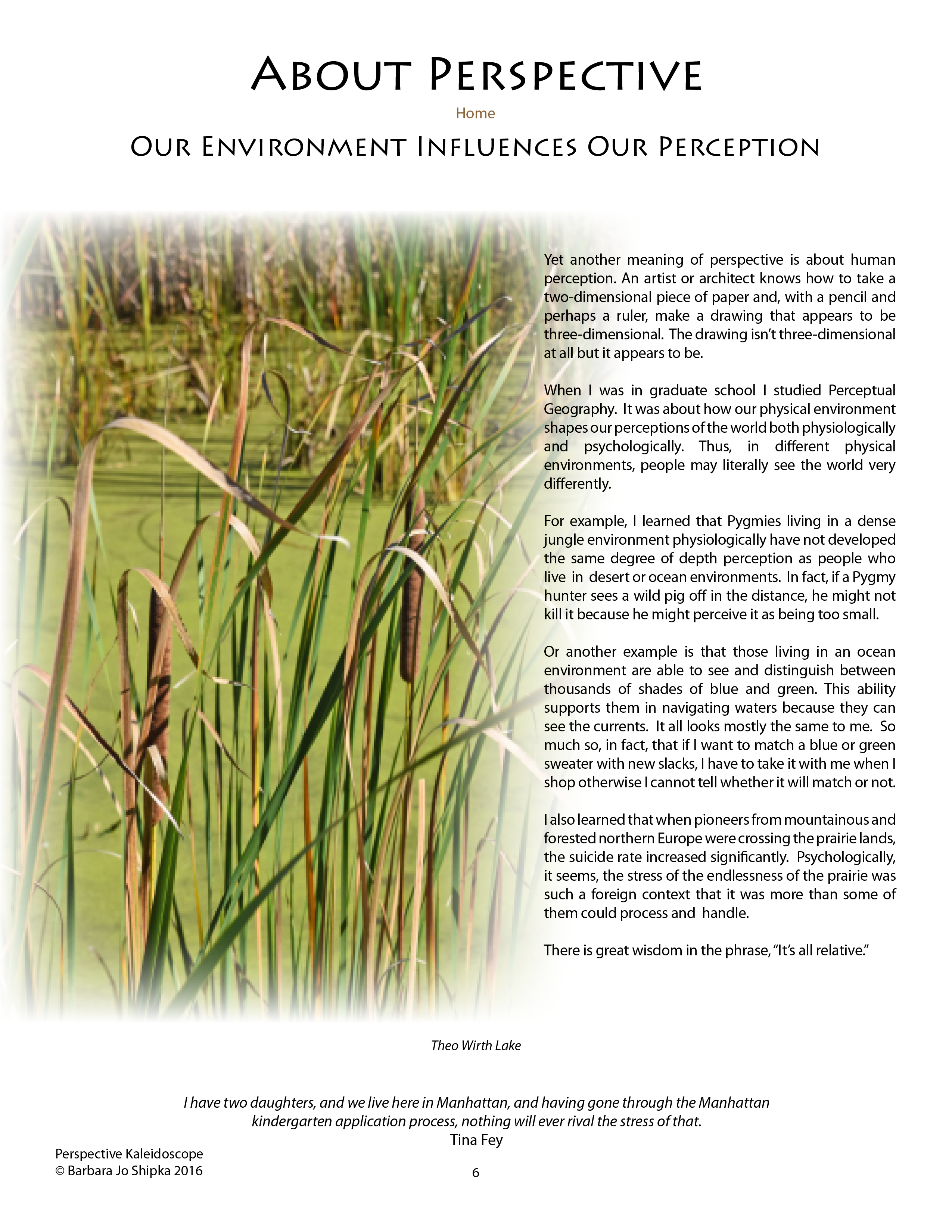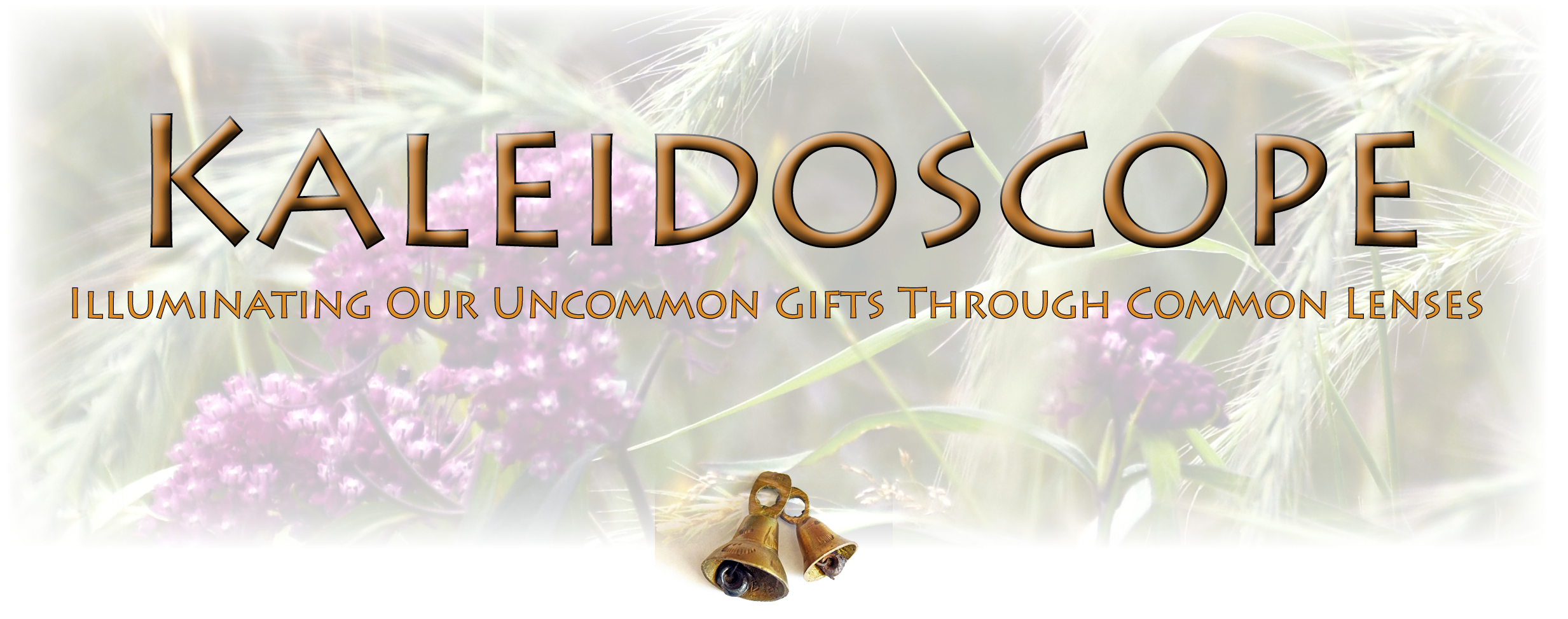Yet another meaning of perspective is about human perception. An artist or architect knows how to take a two-dimensional piece of paper and, with a pencil and perhaps a ruler, make a drawing that appears to be three-dimensional. The drawing isn’t three-dimensional at all but it appears to be.
When I was in graduate school I studied Perceptual Geography. It was about how our physical environment shapes our perceptions of the world both physiologically and psychologically. Thus, in different physical environments, people may literally see the world very differently.
For example, I learned that Pygmies living in a dense jungle environment physiologically have not developed the same degree of depth perception as people who live in desert or ocean environments. In fact, if a Pygmy hunter sees a wild pig off in the distance, he might not kill it because he might perceive it as being too small.
 Or another example is that those living in an ocean environment are able to see and distinguish between thousands of shades of blue and green. This ability supports them in navigating waters because they can see the currents. It all looks mostly the same to me. So much so, in fact, that if I want to match a blue or green sweater with new slacks, I have to take it with me when I shop otherwise I cannot tell whether it will match or not.
Or another example is that those living in an ocean environment are able to see and distinguish between thousands of shades of blue and green. This ability supports them in navigating waters because they can see the currents. It all looks mostly the same to me. So much so, in fact, that if I want to match a blue or green sweater with new slacks, I have to take it with me when I shop otherwise I cannot tell whether it will match or not.
I also learned that when pioneers from mountainous and forested northern Europe were crossing the prairie lands, the suicide rate increased significantly. Psychologically, it seems, the stress of the endlessness of the prairie was such a foreign context that it was more than some of them could process and handle.
There is great wisdom in the phrase, “It’s all relative.”
~~~~
The marsh near Theo Wirth Lake, Minneapolis, MN.
Page 06 in the Kaleidoscope lens on Perspective.

